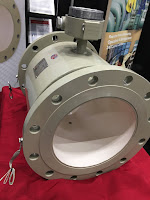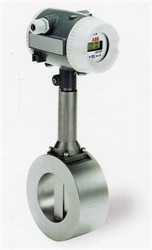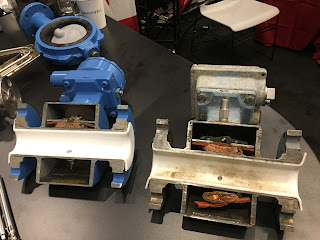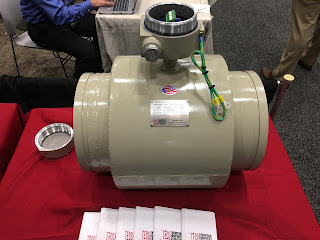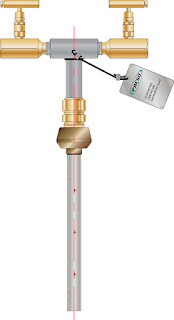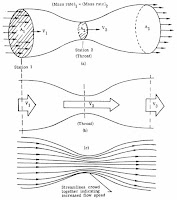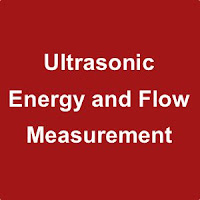 |
| Figure 1. Illustration of the fracing (fracking) process. (Image courtesy of EPA.gov) |
A “conventional” gas reservoir is produced from sands and carbonates (such as limestone). In the conventional reservoir, the gas is in interconnected pore spaces, much like a kitchen sponge, that allow easier flow to a well. In an "unconventional" gas reservoir, such as shale, the reservoir must be mechanically “stimulated” to create additional permeability and free the gas for collection. Permeability refers to the capacity of a porous, sediment, soil – or rock in this case – to transmit a fluid. Unconventional reservoirs include tight gas (low-porosity sandstones and carbonate reservoirs) and coal bed methane (CBM – gas produced from coal seams).
For shale gas, hydraulic fracturing (known as "fracing" or "fracking") of a reservoir is the preferred stimulation method (figure 1). This typically involves injecting pressurized fluids to stimulate or fracture shale formations and release the natural gas. Sand pumped in with the fluids (often water) helps to keep the fractures open. The type, composition and volume of fluids used depend largely on the geologic structure, formation pressure and the specific geologic formation and target for a well. If water is used as the pressurized fluid, as much as 20 percent can return to the surface via the well (known as flow back). This water can be treated and reused – in fact, reuse of flow back fluids for subsequent hydraulic fracture treatments can significantly reduce the volume of wastewater generated by hydraulic fracturing.
The hydraulic fracturing process was used in conventional limestone and sandstone reservoirs for decades before the onset of the shale revolution. But it was not until the 1970s that significant attempts to apply the technology to gas shale were made, pioneered by DOE research and demonstration project cost-sharing with industry in such ventures as the Eastern Gas Shales Project (1976-92).
Another major technology often employed in producing natural gas from shale is horizontal drilling. The shallow section of shale wells are drilled vertically (much like a traditional conventional gas well). Just above the target depth – the place where the shale gas formation exists – the well deviates and becomes horizontal. At this location, horizontal wells can be oriented in a direction that maximizes the number of natural fractures intersected in the shale. These fractures can provide additional pathways for the gas that is locked away in the shale, once the hydraulic fracturing operation takes place.
Accurate flow measurement is important in fracking applications and required for reliable data reporting to supervisory agencies. The preferred technology for measuring flow in fracking applications are magnetic flowmeters (magmeters), primarily for their non-obstructive flow path, accuracy and reasonable cost. There are caveats associated with applying magmeters in fracking applications and selection of specialized flow meter components is required. Fracking sand is very erosive and chemicals mixed with the fracking water can be erosive. Any flow meter used in fracking applications must be rugged enough to withstand these harsh conditions.
 |
| Flow meter designed for fracking applications (as well as for other abrasive slurries) by TECO. |
An excellent solution that provides all the the virtues of magnetic flowmeters and overcomes performance and longevity issues referred to as "severe service flowmeters" or "slurry flow meters" designed with components matched specifically to withstand the mechanical and chemical abuse they will see. Their modifications include:
- A ceramic sleeved liner made of magnesia partially stabilized zirconia. This ceramic can handle the abrasion and chemical attack with very little degradation.
- Highly polished, ultra-smooth Tungsten electrodes. The Tungsten provides outstanding wear resistance while the high-polish reduces electrical noise introduced in the electrode circuitry.
- Special coatings, or paints, to provide exterior protection.
For more information on fracking (or fracing) magnetic flow meters, contact Thompson Equipment Company (TECO) by calling 800-528-8997 or visit https://teco-inc.com.
Source: How is Shale Gas Produced? https://www.energy.gov/fe/shale-gas-101






